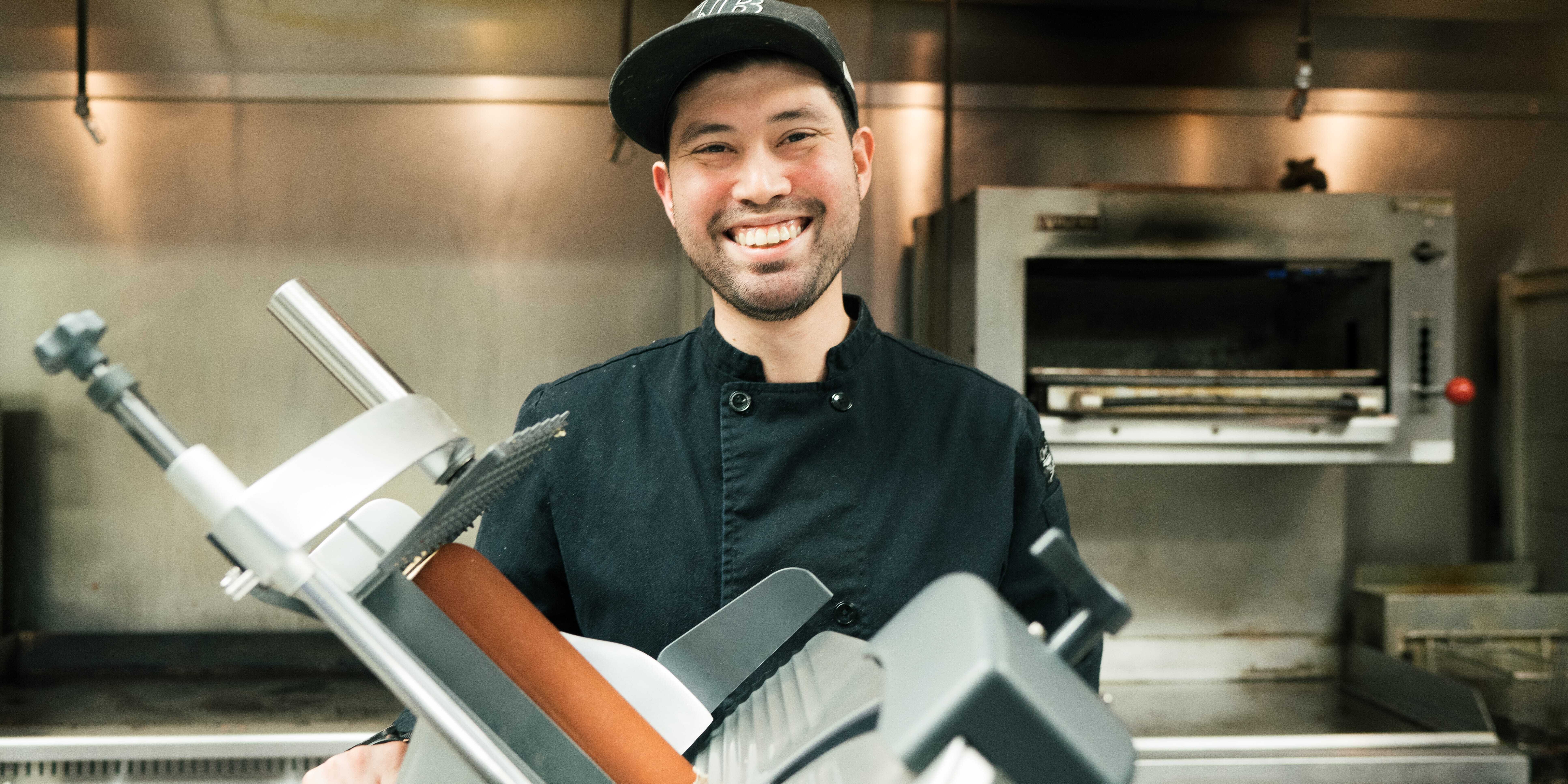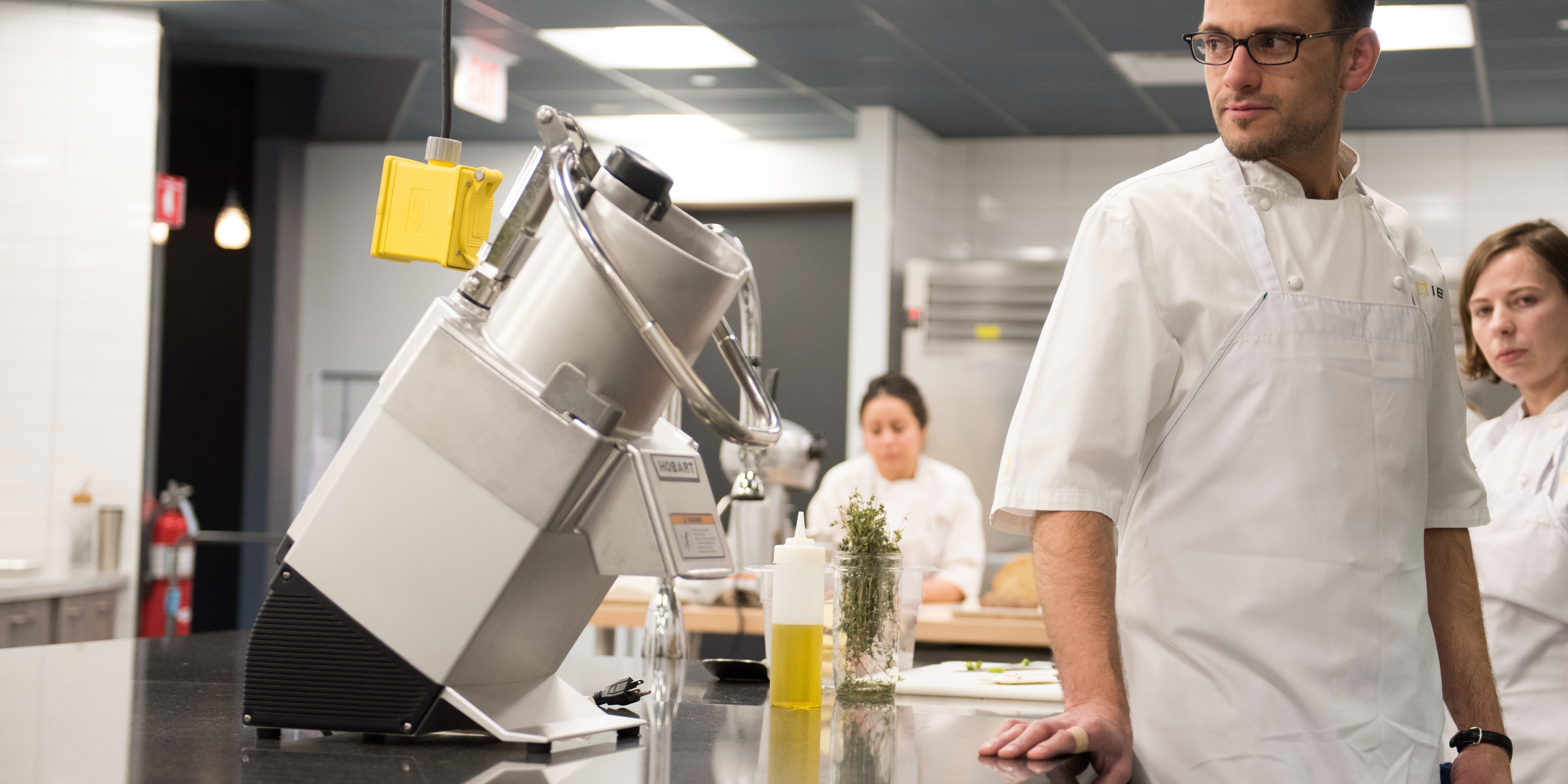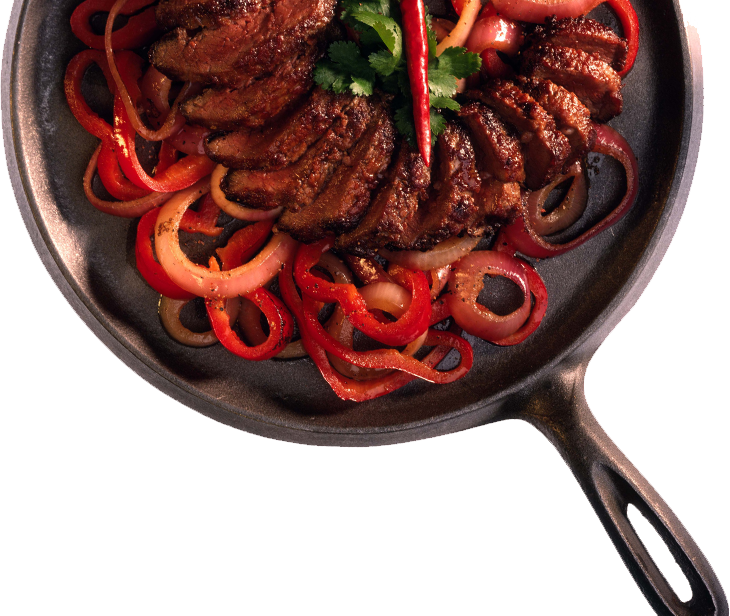Due to labor shortages, many K-12 kitchens struggle to provide from-scratch meals to students. Some of these kitchens also may not be designed with the equipment needed to properly support a scratch cooking model. However, there are grants and assistance programs available to support school districts with a move toward school menu planning that incorporates fresh fruits, vegetables and proteins.
There are several benefits to scratch cooking in schools. Not only does it lead to better tasting food, but it also improves nutrition compared to pre-made food. Plus, scratch cooking allows for complete control over ingredients, so programs can eliminate allergens and enhance flavor. There is the added benefit of cost savings. School districts can buy raw ingredients in bulk and take advantage of lower prices compared to heat-and-serve or pre-package foods. Many times, these ingredients can be sourced locally to support local farms and farm-to-school programs, or districts can use their entitlement dollars to buy fresh produce through the USDA Department of Defense Fresh Fruit and Vegetable Program.[1] Districts that implement scratch cooking often see an increase in meal program participation due to the improved nutrition and taste of menu items. Marketing that the kitchen’s meal program features locally-sourced food items can also help to drive participation, as students (and parents) know where schools get their food.
The basis for success
Having school cafeteria equipment, such as food processors, mixers and slicers that are straightforward and easy for staff to use and clean is important. Even more important is equipment with interlocks for added peace of mind. When new equipment is installed in the kitchen, be sure to schedule a demo from the sales rep so staff can be properly trained how to use and clean equipment. Food prep manufacturers also provide many resources online, including wall charts, manuals and videos that provide answers to frequent questions and guidance on usage.
To address labor shortages in K-12 kitchens, labor-saving equipment such as food processors are a great addition. They help complete the same amount of prep with fewer staff. Easy-to-clean equipment, like slicers with dishwasher-safe removable knives, are also essential in a kitchen with fewer workers. They need less time for cleaning and provide more time for preparing nutritious food for students.
K-12 recipes and preparation
Scratch cooking may seem overwhelming to staff at first, so proper training and support is integral to success. Food service directors and managers should walk the staff through the correct preparation of the K-12 recipes and follow up the first few times each one is on the menu so that staff feel supported. After a short while, they’ll likely see that cooking from-scratch cooking isn’t difficult and can begin to foster a culinary culture — and the answer to the question of what schools serve for K-12 lunch can be fun and creative menu items.
Staff can use slicers to slice sandwich meats and cheeses and not just for a plain turkey sandwich. They can slice deli meat to be used in creative sandwiches such as a turkey, bacon and guacamole sandwich or an All-American Sub (see recipes below). Slicers can also slice tomatoes and lettuce to be used as toppings for sandwiches or in a salad bar. Slicing turkey for a special Thanksgiving-themed meal in the fall is another student favorite.
The sky is the limit when it comes to using continuous-feed food processors in K-12 kitchens. They are incredibly versatile pieces of equipment that can prep almost any fruit, vegetable or nut, as well as shred and grate cheese for a variety of meals. The Hobart FP250 and FP350 food processors feature an optional chicken cutting tool that chops cooked chicken. This allows K-12 kitchens to source whole chicken breasts and chop them on-site to create chicken salads.
Salad bars have been shown to increase students’ consumption of fruits and vegetables.[2] A continuous-feed food processor can chop whole heads of lettuce, and slice tomatoes, cucumbers, carrots, peppers and other salad toppings. Combining the capabilities of two different food processors adds more creativity to what schools serve for lunch. A Walnut and Brown Rice Shaker Salad (recipe below) is easily made using a bowl food processor to chop walnuts and a continuous feed food processor to dice the bell peppers and tomatoes.
K-12 kitchen staff can use a continuous-feed food processor to slice fruit as part of the salad bar, to serve on its own, or used as a topping on fruit pizza or yogurt parfaits (recipes below).
The Hobart FP100 and FP250 continuous-feed processors can dice potatoes to use in potato salads and feature a French fry cutting tool available to prepare sweet potato fries (recipe below).
Mixers are ideal for making muffins, whether it’s a traditional blueberry breakfast muffin or something more creative like a pizza muffin. Mixers can also be used for pancakes (recipes below). Using the attachment hub with a vegetable slicer or meat grinder attachment increases a mixer’s versatility. Staff can grind the pork for pizza muffins, mix up the muffin batter, shred the cheese, and slice the onions and peppers all with one piece of equipment. A school with a farm-to-school program could locally source beef and grind it using the mixer’s meat grinder attachment for tacos, which are an increasingly popular menu item among students.
Equipment best practices
While food prep equipment gives K-12 kitchens the opportunity to provide nutritious, from-scratch meals to students, it’s important to understand their proper use.
Always follow proper steps for slicing — with the slicer blade turned off, pull the product tray to home position until it stops, raise the meat grip, place the product against the gauge plate on the product tray and lower the grip. Then turn on the slicer, adjust the gauge plate to the desired thickness and begin slicing.
To achieve the best cut when processing fruits and vegetables, be sure to load a continuous-feed food processor correctly. The blade turns clockwise as it runs, so staff should load product counterclockwise in the hopper. Always wear gloves and use the pusher component to feed product through the food processor.
For mixers in K-12 kitchens, be sure to consult a capacity chart to avoid overloading the machine. It is especially important to not overfill the bowl, as this can prevent ingredients from mixing properly and can even lead to attachments breaking. When ready to begin mixing, start off slowly to prevent product from splashing out of the bowl and to thoroughly incorporate ingredients. Hobart mixers feature Soft Start technology and ultra-low stir speed that make this easy to do.
Regardless of the food prep equipment being used in a K-12 kitchen, always thoroughly clean it after use, when switching between products being prepared with the equipment, or at intervals as mandated by law. Consult the operator manual to determine which pieces of the equipment are dishwasher safe and which pieces must be washed in a three-compartment sink.
Remember, from-scratch cooking in the K-12 kitchen doesn’t have to be difficult. With the proper training and the right food prep equipment, it can make short work of the job and free up labor for other tasks.
References
- https://www.fns.usda.gov/usda-foods/usda-dod-fresh-fruit-and-vegetable-program
- https://schoolnutrition.org/journal/spring-2019-salad-bars-in-schools-and-fruit-and-vegetable-selection-and-consumption-a-review-of-recent-research/
Recipes
- Turkey, Bacon and Guacamole Sandwich
- All-American Sub
- Chicken Salad
- Walnut and Brown Rice Shaker Salad
- Watermelon Pizza
- Yogurt Parfait
- Sweet Potato Fries
- Blueberry Muffins
- Pizza Muffins
- Buttermilk Pancakes
About the Author
 Grace Strotman is the marketing & K-12 segment specialist for Hobart – Food Preparation Products. She has been with Hobart since 2020 and is responsible for marketing communications for the full line of Hobart food preparation equipment, with an added focus on the K-12 segment. See all her blogs here.
Grace Strotman is the marketing & K-12 segment specialist for Hobart – Food Preparation Products. She has been with Hobart since 2020 and is responsible for marketing communications for the full line of Hobart food preparation equipment, with an added focus on the K-12 segment. See all her blogs here.


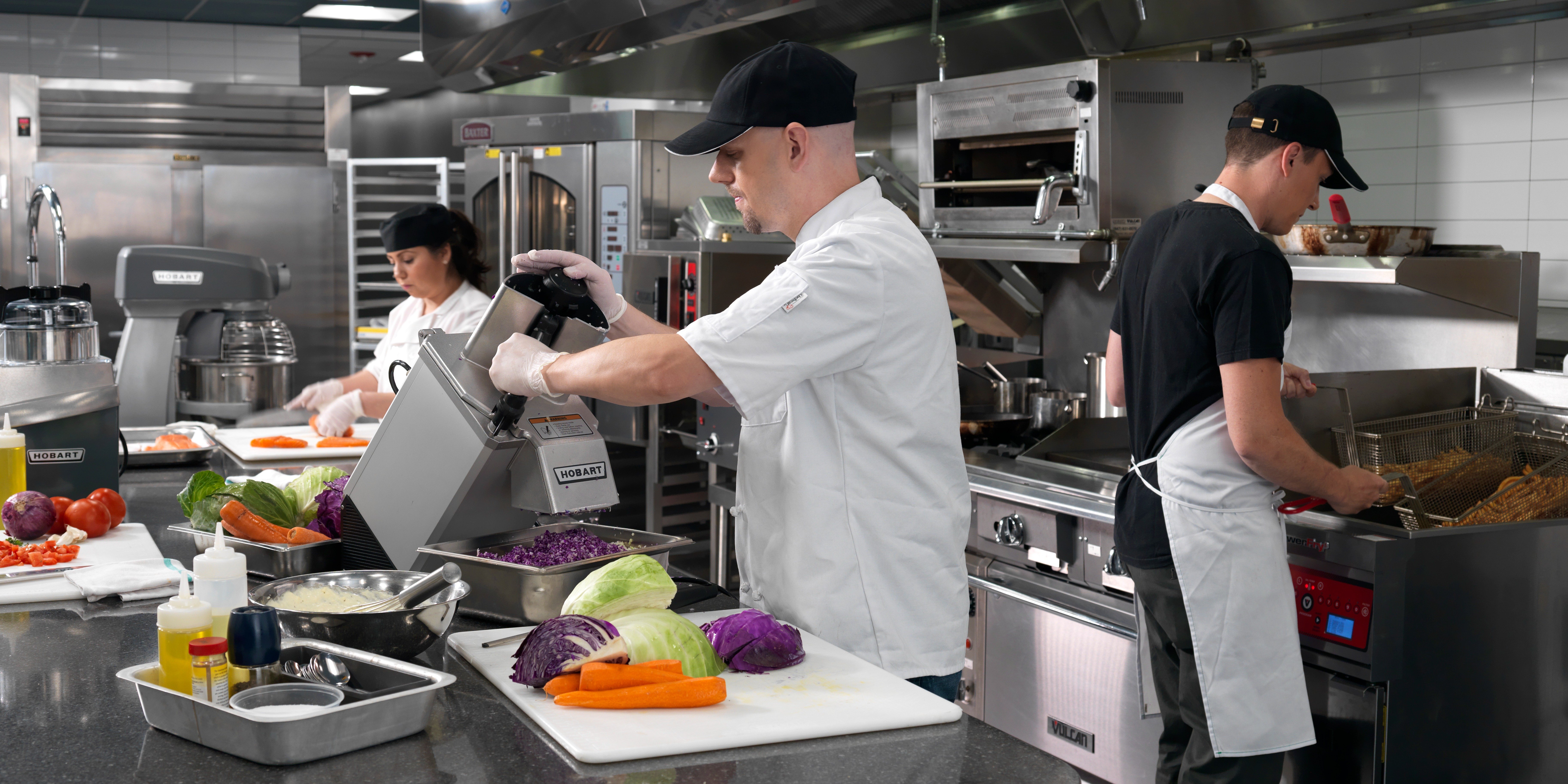

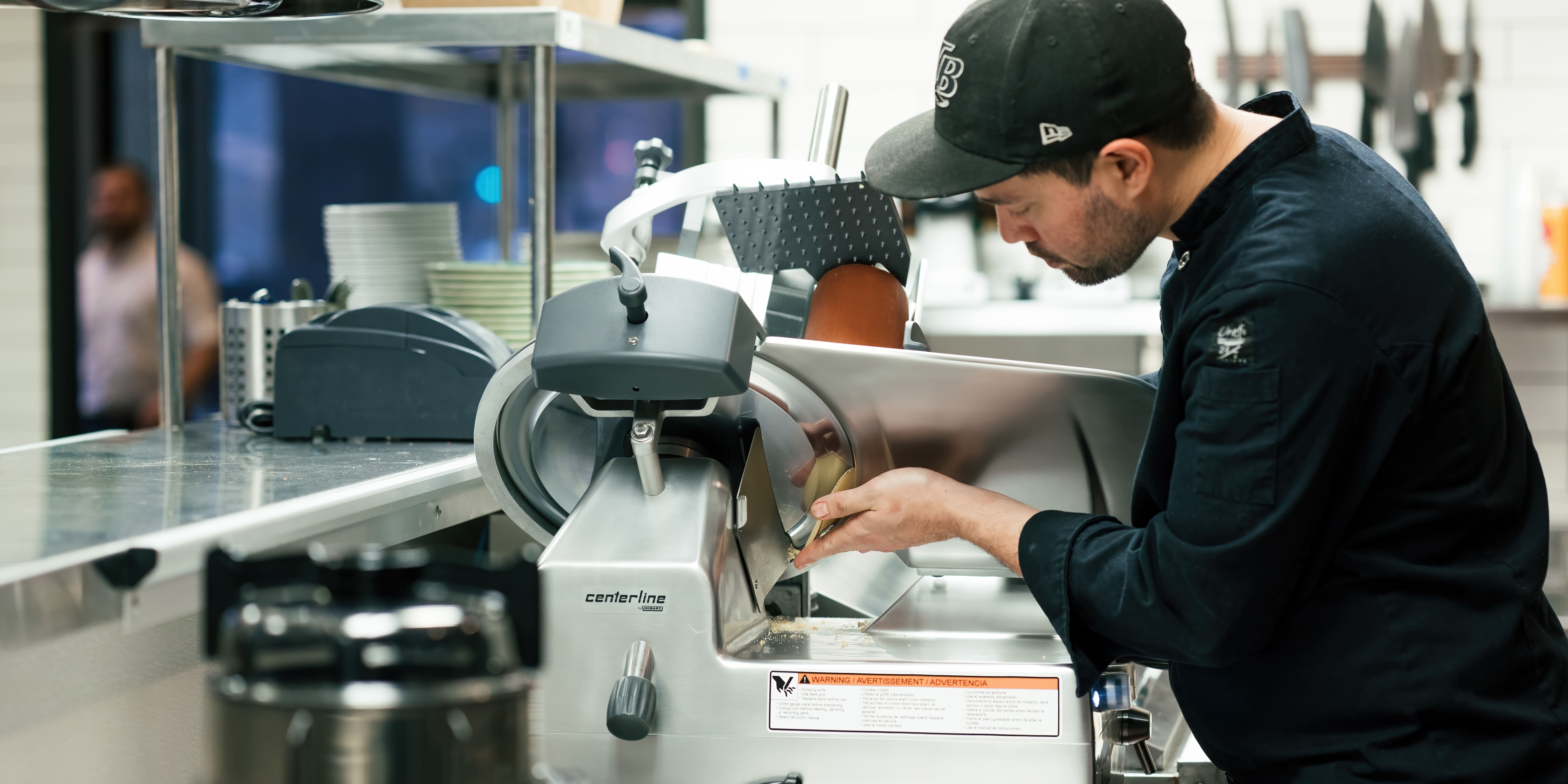
-min.jpg)
